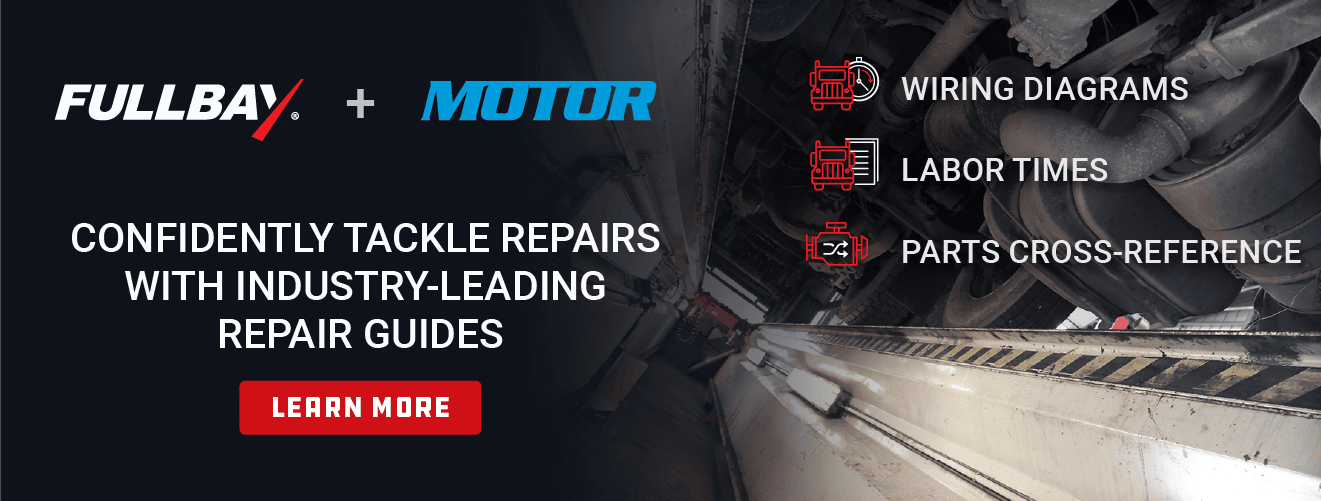Pre-Trip Inspection

In the trucking business, time and miles are money. Even issues that cause a temporary delay affect a day’s workflow and the company’s cash flow. Conducting a pre-trip inspection on your vehicle before you hit the road is the common-sense way to avoid those costly delays. Knowing everything is in working order ensures your truck will make the trip out and back safely. It’s more than a peace-of-mind issue, however. Inspecting heavy-duty trucks prior to driving them increases safety for drivers and the others they share the road with. Plus, it keeps trucks in compliance with federal regulations.
Pre-Trip Inspection Isn’t Optional
A pre-trip inspection is meant to be an in-depth check. It ensures every part of a truck and trailer is working properly before a driver takes it out on the road. Logically, you’d think that it’s a procedure every driver would want to perform voluntarily. On the other hand, it’s natural to skip doing optional things, especially if you’re in a hurry. In an effort to reduce injuries and crashes involving heavy-duty trucks, the government stepped in and made daily inspections of commercial vehicles a requirement. As part of a bill signed into law in 2012, drivers must examine their vehicles every day and prepare a report listing the odometer reading and the condition of the truck and trailer’s components.
What a Pre-Trip Inspection Entails
A pre-trip inspection is thorough, so it will take more than a few minutes to complete. It’s worth it, though, to confirm that your truck is ready to roll and won’t be breaking down or incurring fines for non-compliance.

Start With a Visual Assessment
Many drivers conduct a pre-trip inspection going from the headlights on the truck to the brake lights on the trailer, and assessing every part in between. CDL schools usually have a checklist that gets students used to the process. Starting with a visual overview, drivers should confirm the lights are clean, secure, and unbroken; that the truck is upright and not leaning; and that no fluids are leaking from the engine.
The next step is to pop the hood and check fluid levels, secure caps and the dipstick, inspect the electrical system, hoses, belts, and other components for signs of wear and proper connections. Check the tires on the truck and trailer for sufficient tread and possible puncture issues. Examine the brakes and brake pads, the trailer suspension, and the landing gear. Also, the entire truck body should be inspected, including the coupling and connections, and note any damage.
Inspect the Moving Parts
The truck’s physical condition is important, but so is making sure it runs well. Part of the pre-trip inspection includes starting the truck and letting it idle. Use this time to listen to the engine, test the clutch, and check the readings on the gauges. Turn on the flashers and lights, then get out and confirm that they’re working. Also while the truck is running, take another look at the belts to ensure proper tension and function, and take a second look at the motor for leaks. It’s also a good idea to pull forward and back up a few feet to assess the trailer wheels, the trailer brake, and the foot brake. Finally, do one more visual overview to confirm you didn’t miss anything the first time around.
What if You Find an Issue?
Hopefully, your pre-trip inspection won’t turn up any issues. If it does, at least you can do something about it before it causes problems on the road. Naturally, you’re required to note any defects you find and report them on the DVIR, along with the repairs made to correct them.
What’s nice about heavy-duty repair software like Fullbay is that it makes managing repairs a snap. Drivers or fleet managers can use the customer portal to submit a repair request the minute an issue pops up. What’s more, the customer portal puts all the maintenance and repair records at your fingertips including work approval and PM history. A tool like Fullbay software improves safety and saves time and money on towing, downtime, and roadside repairs. Plus, it provides data for required inspections, so your trucks stay in compliance.

